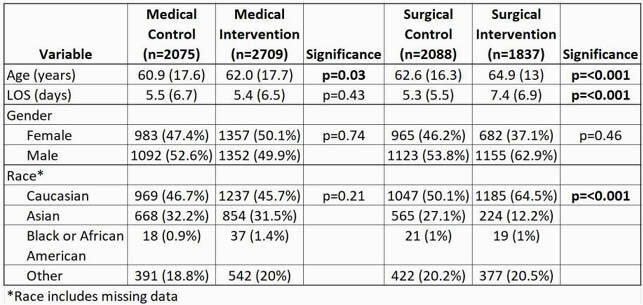Abstract
Background
Non ventilator hospital-acquired pneumonia (NVHAP) is now the most common HAI. The purpose was to test primary source control through reduction of germs in the mouth as a modifiable risk factor for in NVHAP prevention.
Methods
The 12-month study (10/1/18–9/31/19) was conducted at an 800-bed tertiary medical center. 1 medical and 1 surgical unit were randomized to enhanced oral care (intervention) and matched with 1 medical and 1 surgical unit providing usual oral care (control). An American Dental Association oral care protocol was delivered by nurses/nursing assistants (Intervention) vs. usual care. Frequency of oral care was tracked. Pneumonia cases were identified using ICD-10 codes and confirmed using CDC criteria.
Results
For medical control (n=2059) v. intervention (n=2706), oral care/day increased from .96 to 2.2; there was an 85% reduction in NVHAP (1.41 to 0.21)/1000 patient days which was significant by Chi-square (p< 0.001), and Cramer’s V effect size of 0.52. Using logistic regression, the odds of NVHAP were 7.1 times higher on the on the control unit v. intervention (OR:7.1 [CI 2.01:24.1] p=.002). For surgical control (n=2075) v. intervention (n=1830), oral care frequency/day increased from 1.2 to 2.1. There was a 56% reduction in NVHAP which was NS by Chi-square (p=.289), Cramer’s V effect size of 0.02, and this group was underpowered to detect a difference (post hoc actual power=.61).
NVHAP demographics

NVHAP incidence

NVHAP secondary outcomes

Conclusion
These findings add to the growing body of evidence that oral care as primary source control is likely to have a role in NVHAP prevention.
Disclosures
Karen K. Giuliano, PhD, Medline (Grant/Research Support) Daleen Penoyer, PhD, RN, Medline (Grant/Research Support) Aurea Middleton, MS, RN, Medline (Grant/Research Support) Dian Baker, PhD, RN, Medline (Grant/Research Support)


